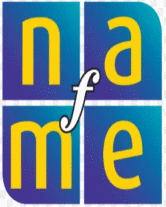Help your students in approach tasks, brainstorm, and analyze with these tips.
Page 2 of 2
How to Approach a Task
- When learning selections for solo and ensemble musical festivals or learning parts for a musical show, students could be asked to create individual time lines for their work. Each student will divide the music he or she must learn into sections to be memorized by self-determined dates.
- When students are preparing to perform away from the school, ask them to decide what tasks must be completed in order for the program to be successful. Encourage students to list the tasks, find student or parent volunteers to complete appropriate jobs, and generate a time line for completion. This not only teaches students how to approach a task, but builds responsibility, independence, and appreciation for the work it takes to present a concert.
- When you are preparing students to sight-read a new selection, ask the students what the group might talk about beforehand that will lead to a more successful reading of the piece. Students might suggest rhythmic and melodic patterns, notational concerns, and vertical or horizontal comparison of parts. Students who participate in this thinking activity as part of their ensemble should be encouraged to practice this same behavior when sight-reading a new selection alone.
- Music students ask to create an instrumental accompaniment for several poems they have studied. As they begin, discuss with the students their choices: sound effects or melodies? Having the entire class accompany each poem or dividing the class into groups and having each group accompany one poem? Using classroom instruments or found sounds?
Brainstorming
- Have a group of children demonstrate as many ways as they can think of to create rhythms on a tambourine.
- As a means of encouraging vocal exploration, ask preschool children to individually create all of the sounds they can imagine coming from a shopping mall.
- Ask the high-school performance ensemble how the seating or riser arrangement could be redesigned to accommodate a very unusual performance setting. As with all brainstorming, give answers quickly with no judgments on the first run-through.
- The staff at the middle school would like to collaborate for a March PTA presentation that would share with parents learning across the curriculum. Ask your music students to brainstorm topics that could be used as an umbrella title for this sharing. After the faculty has agreed on a theme, ask your students to brainstorm music selections that fit the topic and that they would like to learn and perform for the meeting.
Analyzing
- Ask students to look through a piece before singing or playing it to find the musical "road maps" or a first and second ending.
- Ask the high-school performance ensemble to listen to a recording of themselves. Discuss the balance between the sections.
- Have the class view a video of Yoruba singing, drumming, and dancing. Ask the students to individually list what they learned about the music and the culture from this tape. What other questions do they have about the music or the occasion?
- Have a string player look closely at a musical passage and mark the bowings.
- Have elementary students find repeated tones in a melody by looking at the notation or listening to a recording.
Excerpted from TIPS: Thinking Skills in the Music Classroom.












